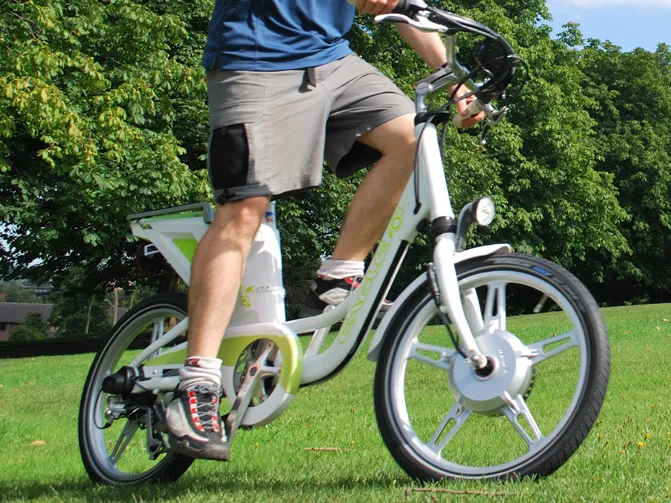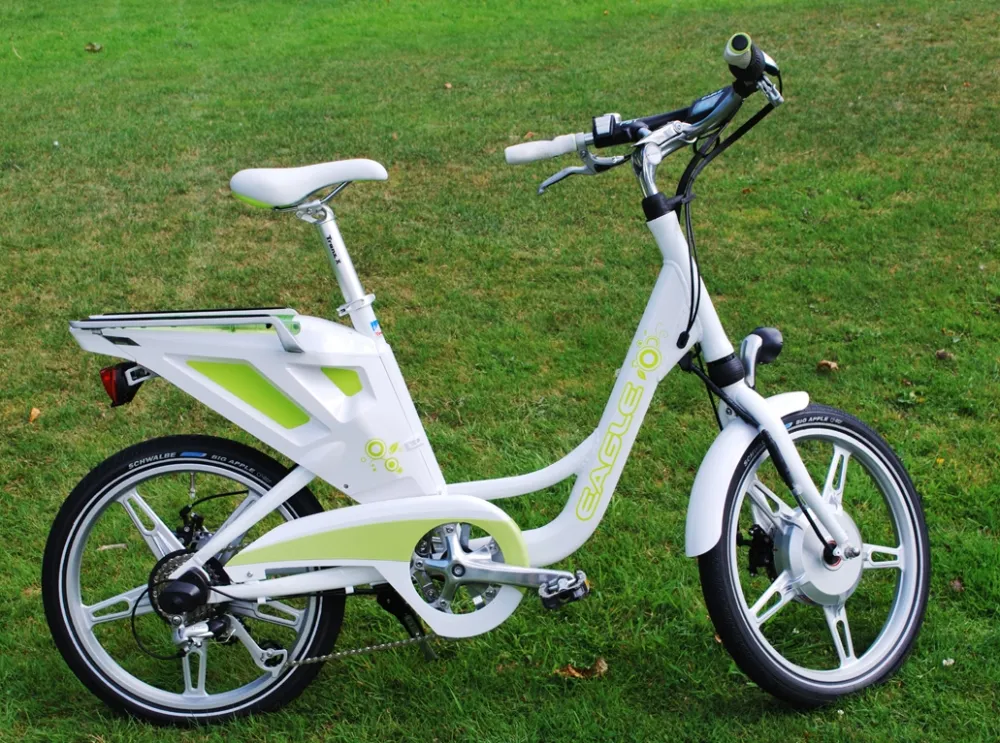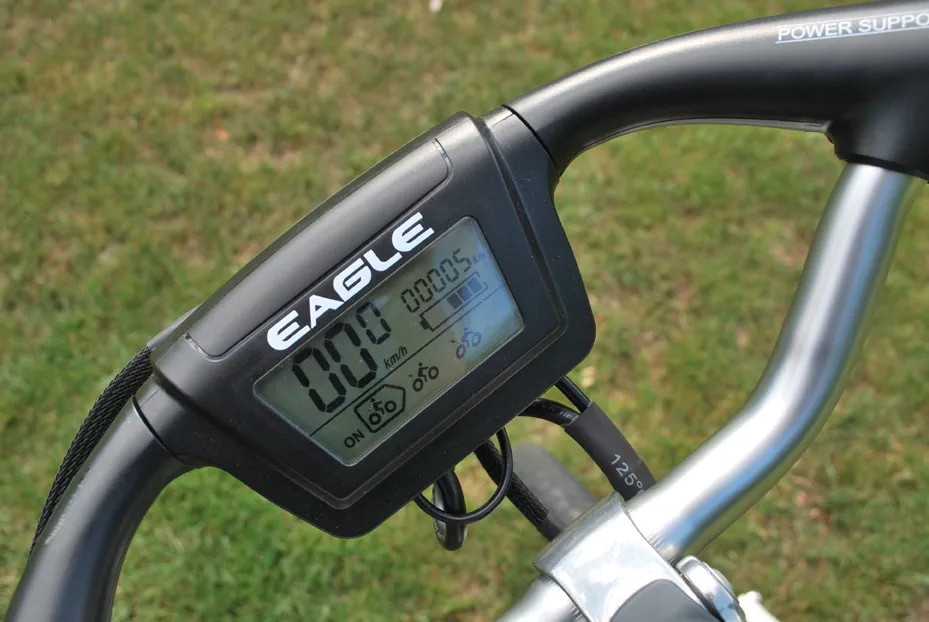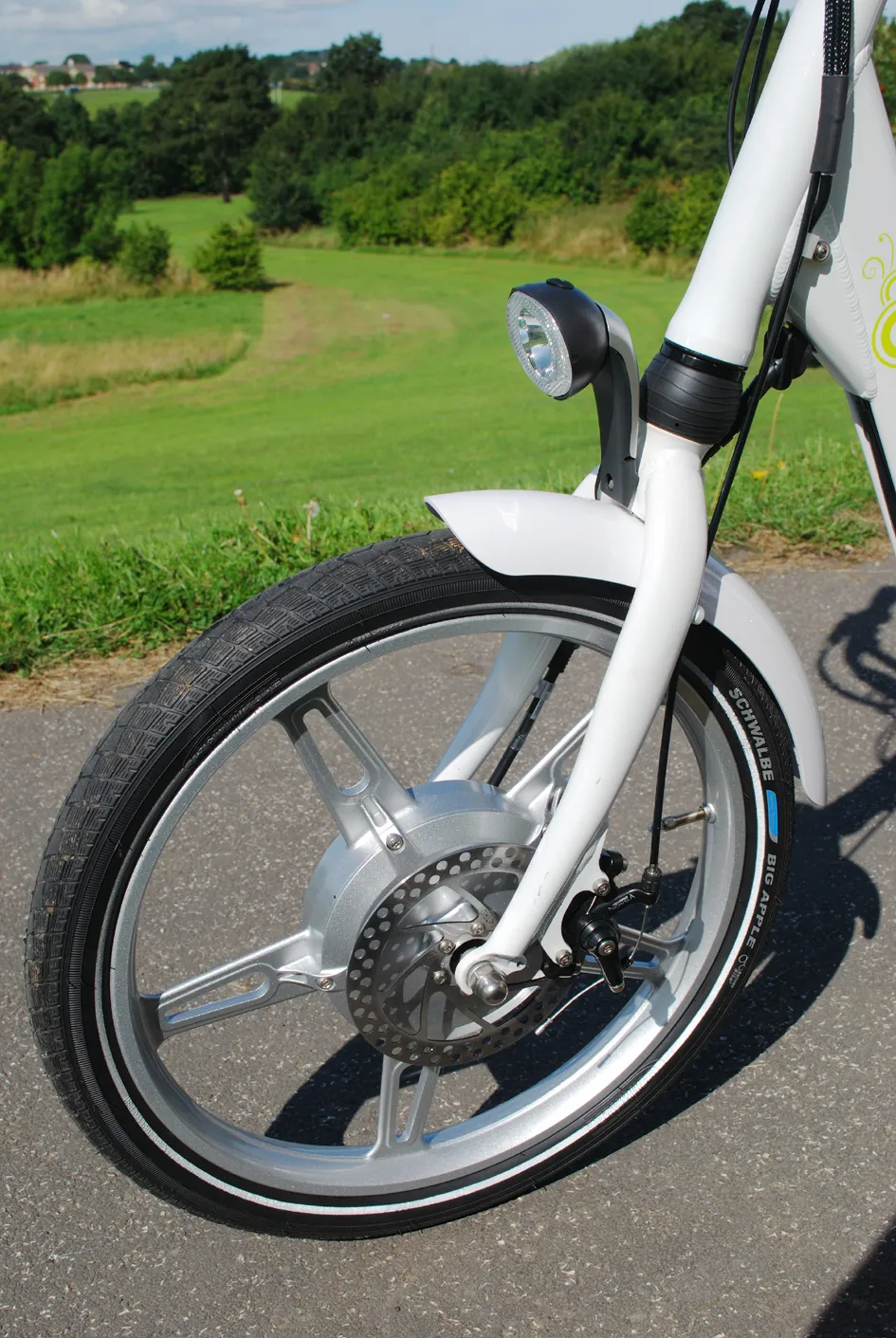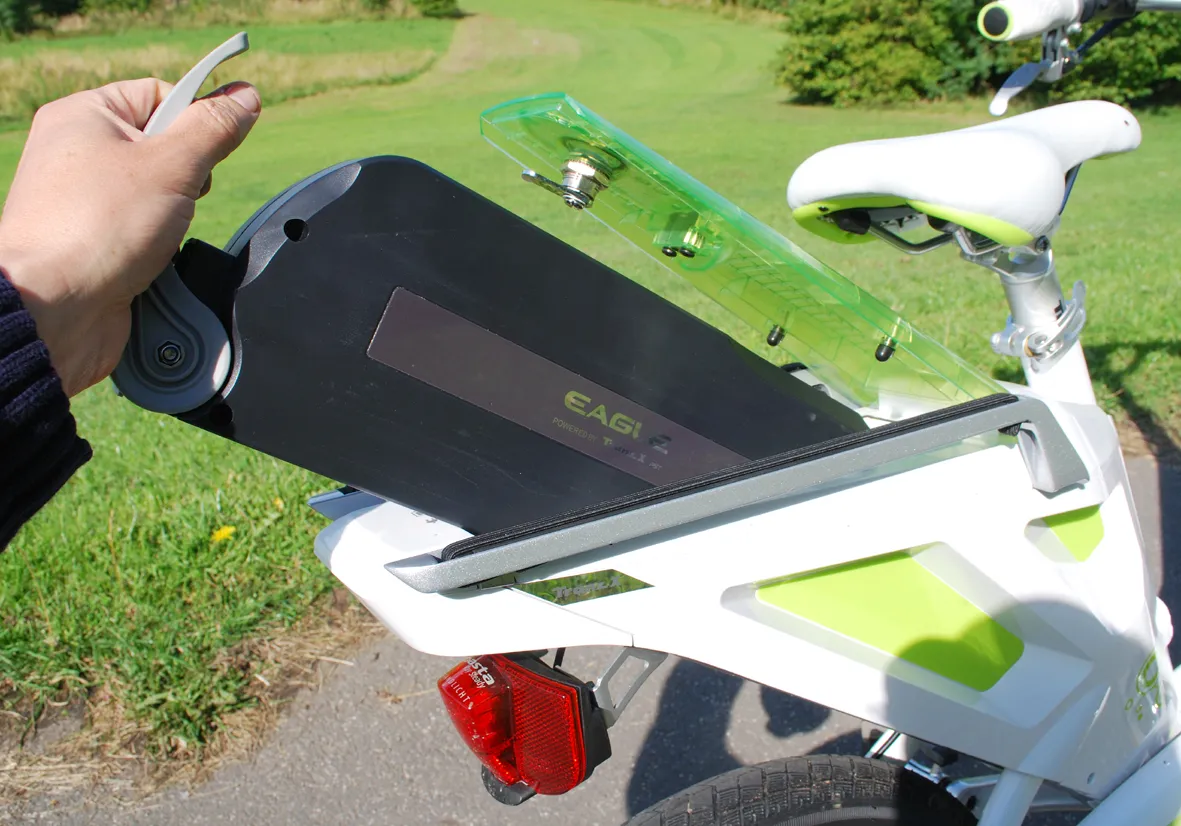Taiwan's JD Corporation have successfully sold their Eagle electric bike – aimed at the younger end of the market – to many German companies, where the e-bike scene is booming. The Eagle is about to land in the UK, where they're hoping for similar success.
It is certainly a head turner – 20in wheels and a short wheelbase give it an appearance somewhere between dinky and sporty, and while the-one size aluminium frame is reasonably conventional, the cast alloy wheels incorporating motor, disc brakes and dynamo power for lighting definitely aren’t.
The battery housing above the rear wheel also stands out, along with the wheels, giving the bike a rather moped like appearance. There's a large range of adjustment on the seatpost, and the highly adjustable handlebar stem rakes forward and back at the touch of button, all meaning the Eagle will suit a wide range of body shapes and sizes.
The pedelec power system is a rather unusual design, incorporating JD’s own torque sensor design into the rear dropouts as well as using a magnetic cadence sensor. The rider simply sets the assist level required (three levels plus ‘turbo’ button available) using the handlebar mounted control buttons and screen, then pedals. After a second or so the power kicks in, and even at the lowest level is appreciable.
Big tyres and a small amount of front suspension soak up smaller kerbs and potholes. Come to a hill and engage the correct gear using the Shimano Alivio eight-speed derailleur and you'll cruise up with very little effort – the excellent pedal sensing system means the harder you pedal, the more power you get.
If you want to shed pounds and sweat a bit on the hills, knock off the power and pedal up – with the torque sensor in the rear dropouts (rather than the bottom bracket as is often the case on other mid- to high-end pedelecs, which can feel a bit ‘squidgy’ to pedal) the Eagle is very 'bikelike' to ride, despite its hefty 27.5kg (60.6lb) weight.
While the short wheelbase and sharp disc brakes give it nippy handling round town, the slight delay in the pedal sensor means it's probably better suited to longer, faster commutes over steepish terrain where you aren’t constantly required to stop and start.
However, the Eagle should tackle just about any ride on tarmac and well made tracks over just about any gradient. Our only real quibble was the very poor front lighting – underpowered, and totally absent at low speeds or when standing still.
The battery, which has a 360Wh nominal capacity and weighs 3.8kg, removes for charging, which takes around six hours. Stated range is 32-38 miles in the bottom power setting – and from our test rides on a medium power setting, this looks about right.
Of course, range figures for e-bikes are notoriously inaccurate as vary depending on rider weight, terrain, riding style, weather and other factors. And as with all lithium-ion batteries the usual caveats apply – original batteries are only guaranteed for a relatively short time (1 year from purchase in this case), the stated number of recharges (500) is often an optimistic figure and replacements are expensive (approx €500-600).
However, if you're planning to replace petrol power with an electric bike, comparative running costs are usually heavily in favour of the electric bike – even after depreciation of bike and battery are taken into account.
The TranzX PST electric drive system is, say JD, the number two seller on the market in terms of power assistance systems and they are clearly hoping to make a big impact on younger riders, an area not usually associated with electric bikes.
The Eagle is sold via bike manufacturers and retailers who can specify their own spec – there are 250w and 350w motors for example, but only the 250w version will be available in the UK (the 350w version is classified as a moped here).
In the UK it will be sold via EBCO as the Eagle 50 (LSL and LSR denoting either step-through frame or top tube model), with a late summer launch said to be imminent.
